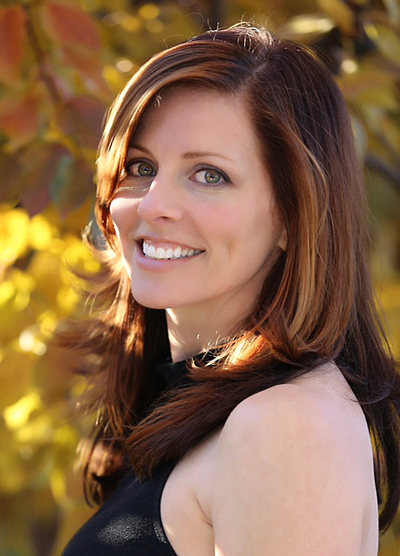This is an interview with Ena Burrud, E-RYT500, a certified yoga therapist working with veterans in Colorado and Wyoming. Herself diagnosed with PTSD from chronic trauma, she has been offering iRest (integrative restoration) since 2012; and began sharing the practice in VA facilities in 2014.
Rob: What originally motivated you to do this work, and what continues to motivate you? How, if at all, has that motivation changed over time?
Abuse and traumas in my life drove me to express myself initially as an actress in college, and then professionally. Although successful, I was drawn to dig deeper. Yoga and iRest meditation put me in the trenches, both in my personal work, and in teaching yoga. In my first iRest training, the class consisted of 70 percent veterans and those working with them. The sense of duty and pain were palpable.
My father is ex-Navy. I was briefly in civil air patrol as a teen, and later denied enlistment in the Air Force for health reasons. I've always been attracted to warriors; yogic texts, like the Bhagavad Gita, flesh out the metaphor of battle. Those stories help us identify personal forms of conflict and resolution. Our nation owes a debt of gratitude to the men and women who have given their time, hearts, minds, and skills to protect our liberties. I am compelled to help them come home, inside and out.
Is there a standout moment from your work with the veteran population?
It occurred during an iRest training session: a beautiful female veteran stood up, took the microphone, and began to cry. She said that when pressed to find a symbol for her safety, she couldn't decide between her newborn baby or her weapon. The entire room was quiet. She spoke not only for a soldier's surreal dilemma, but also for a woman's place in modern warfare.
What did you know about the population you are working with before you began teaching? What were some of the assumptions you had about this population, and how have those assumptions changed?
I'm quite familiar with facing life after trauma. I had not, however, heard the details of these exquisitely personal war stories of the veterans I teach. How can anyone experience war and NOT struggle back home? The rules of engagement for war are based on strategy and staying alive. We watch war movies, the news and other media from the comfort of our couches. It's neither right, nor wrong. It is simply our present-day reality. But it is startling that we do not seem to have enough resources for our vets' needs back at home; veterans are very underserved. My experience as a vendor for the VA is that we need smoother, more expeditious systems in place, as well as more providers and diversity of treatments.
What are two distinct ways that your teaching style differs from the way you might teach in a studio, and what are the reasons for these differences?
In a typical studio group class, my approach is based on theme, requests, Ayurvedic assessment, and often the seasons. The cadence and style are light or contemplative, with breath work geared to philosophical and spiritual growth. In private sessions and veteran groups, I use a structured approach for sense of success and familiarity. iRest has a protocol, but each session shifts its inquiry within the framework. Some deconditioning is the result of this slower-paced journey; that can be uncomfortable. Calming breathing techniques, grounded poses, lifestyle choices and applied yoga psychology are part of the work we do together.
What has been the greatest challenge in your teaching experience, and what tools have you developed for addressing that challenge?
Personal agenda is a sneaky creature. It pops up right when a client is having an insight and finding words to express it. Through the years, the greatest moments of healing come from my listening and presenting the work while I remain somewhat invisible. The challenge is to keep things simple, easy to take home and to duplicate, to not overload too much information. There is such a wealth of text out there with incredible philosophical content that can radically alter outlook. But we can only digest a little at a time; it takes a while to feel the difference. That "felt sense" (iRest vernacular) is the catalyst for change.
What advice would you give to anyone who is going to teach in the population you work with?
Do it! This is an amazing group of people. Enroll in specific training and procure professional mentorship of those who are already doing the work. Seek advice from western and eastern medical fields, and nurture those relationships. Stay optimistic when a group series yields attrition; we can't know what kinds of struggles keep our vets from regularly attending sessions. Keep the pacing slower, the language easily digestible, and intuit when to shift the class or session plan. Cultivate the skill of synthesizing yoga philosophy with other cultural and religious belief systems. Finally, develop strong personal and professional boundaries. This will elicit respect and reverence for all involved.
What are some of your ideas about, or hopes for, the future of "service yoga" in America in the next decade?
The wounds of our veterans permeate all realms: physical, psychological, and spiritual. Posted on The Huffington Post, January 10, 2014, "veterans make up nearly 10 percent of the U.S. population, they account for roughly one in five suicides, according to an analysis conducted by News21, an investigative student journalism initiative, CNN reported in September." Their needs are immediate. Yet our nation struggles to allocate resources. Implementing more models in which non-VA care providers network and advertise directly to this population would be advantageous for all involved. Websites that categorize grant-funded, nominally- and competitively-priced services would facilitate greater access to more care. Our imperative is to assist these brave men and women with re-integration into the very culture they have fought hard to protect. Training for war is intensive. Training to return to their home lives is crucial.
How has this work changed your definition of service? Your definition of yoga? Your practice?
Needs are dynamic in the continuum of healing, and iRest and yoga therapy are flexible approaches that can serve anyone on that continuum. This is important, because healing doesn't occur in a linear fashion. Service here is now defined by an explorative quality of being with, rather than "dealing" with, a condition. Classical definitions of yoga practice from my early years had markers of progress. Now, charting those markers has become less concrete. There is a soulful artistry in allowing pain, joy, confusion, loss, and success move through our open hands like water. Nothing here is permanent. This realization has fostered deeper appreciation for me. I am in each soldier's story. My personal practice more deeply honors the chaotic and the mundane for the gifts they bring. My teen children need me to just do nothing with them sometimes, to listen to them talk of friends and new shoes. I am also compelled to listen to the pain a vet shares when remembering unimaginable destruction. Those relationships are the union to which the definition of yoga refers. That is the practice now. I listen, breathe, and feel the sacredness of it all.
___________________
If you -- or someone you know -- need help, please call 1-800-273-8255 for the National Suicide Prevention Lifeline. If you are outside of the U.S., please visit the International Association for Suicide Prevention for a database of international resources.
___________________
Editor: Alice Trembour
The Give Back Yoga Foundation is honored to provide therapeutic yoga resources at no cost to veterans and active duty service members, offering them with tools to successfully navigate the transition home after combat. Stay connected with Give Back Yoga as we share the gift of yoga with the world, one person at a time, by following us on Facebook and subscribing to our newsletter.

